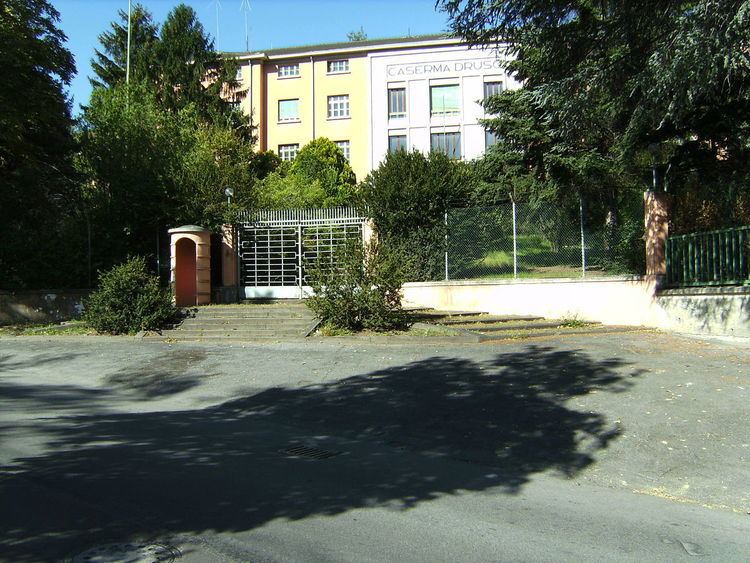 | ||
The arm of the Common Army of the Austro-Hungarian monarchy that was usually called the Imperial and Royal Infantry (German: k.u.k. Infanterie) comprised two elements:
Contents
Organization
In its entirety the k.u.k. Infantry consisted of the following:
According to the organizational regulations for the k.u.k. infantry in 1895, each of the 102 infantry regiments in peacetime was structured as follows:
Side arms
In the k.u.k. Infantry the following soldiers carried a sabre as a side arm:
Officers carried the infantry officer's sabre, which was 82 cm long and had a hollow grind on both sides. At the tip the blade was double-edged. The scabbard was made of brass and fitted with a sharpening iron (Schleifeisen). Two iron suspension rings were fastened to the scabbard in order to hang it from the sword belt. The sabre was always carried buckled underneath. The sword knot of the sabre was made of gold thread and consisted of a tassel and strap. The tassel was made of dangling knots (Bouillons) that were gold on the outside and black inside. This sabre was carried by ensigns and orderly sergeants (dienstführenden Feldwebeln).
Paymasters, field officers and members of the regimental band carried the M 1861 infantry sword as a melee weapon. This was 65.8 cm long and carried in a leather scabbard. NCOs carried this sabre with an NCO's sword knot which was made of imperial yellow and black wood. The tassel was immediately below it.
Battalion and company drummers, battalion buglers, stretcher bearers, bandage carriers (Bandagenträger) and wagon drivers (Fahrsoldaten) carried the M 1862 engineer sabre.
Soldiers' peacetime parade dress
Soldiers and NCOs wore parade dress or ceremonial headwear (Paradekopfbedeckung) and frock coats (Waffenrock). In summer the coat was only worn when ordered. Depending on the weather it was either carried en bandouilère (i.e. rolled and slung over the shoulder) or worn. In winter it was always worn. Bread bags and field implements were not carried.
In the field, soldiers wore the so-called marching order (Marschadjustierung), i.e. they wore a field cap (Feldkappe) instead of the ceremonial hat and a field shirt (Feldbluse) instead of the frock coat. In summer the coat was worn en bandouilère, in rainy weather and in winter it was put on. Other orders of dress (e.g. mountain dress) were worn by order or in special circumstances.
Officers parade dress
Parade headwear, frock coat, sash, all medals - but without the ribbons of the grand crosses. When marching off on parade with the troops, in their order of dress, but only with coats if these were worn by the troops. Mounted officers without saddle bags and revolvers. If the troops were wearing their coats en bandouilère, mounted officers must strap their coats to the saddle. In full dress, as on parade, as ordered with or without sashes and ribbons on the grand crosses.
In the field officers had to wear the same uniform as the soldiers (except that mounted officers wore it breeches).
